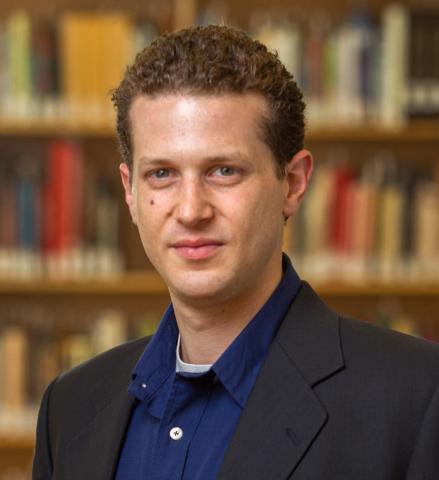Carney scientist wins early-career award from Society for NeuroEconomics

The Society for NeuroEconomics has named Amitai Shenhav, a Brown University neuroscientist, one of two recipients worldwide of its 2021 early-career award.
Neuroeconomics is an emergent field that represents the confluence of economics, psychology and neuroscience in the study of human decision-making. Each year, the society grants two early-career awards to researchers who demonstrate significant contributions to understanding the neural basis of decision-making or the impact of this knowledge on formal understanding of decision behavior.
“I’ve been a part of this society and attending its meetings since I was a graduate student, and the people I have seen receive this award have often been people I looked up to and whose research I followed closely,” said Shenhav, an assistant professor of cognitive, linguistic and psychological sciences. “It was both surreal and humbling to be placed into a similar category as them.”
Shenhav’s research examines the computational and neural mechanisms at the intersection between decision-making and cognitive control with a focus on how people weigh the costs and benefits of engaging in cognitively demanding tasks. He tries to understand how people make choices, particularly how they determine how much of their mental resources to invest in a given task.
The Shenhav Lab has helped lay the foundation for this area of research by developing a model of how people decide when and how to invest their mental effort, and by running experiments that test the model’s predictions about how people will perform on a task in a given situation. Shenhav and his team also study how people make everyday decisions, such as between different restaurants or menu items.
“We try to provide a new angle on these decisions that is inspired by our research into how people allocate their mental resources,” Shenhav said. “In particular, we try to understand what kinds of mental resources go into supporting the process of making a decision and what kinds of bottlenecks that creates when people have trouble making a choice.”
Members of Shenhav’s lab are now starting several large-scale projects aimed at mapping out the brain circuits that weigh the costs and benefits of exerting mental effort. Their work is focused on how the brain collects information relevant to a cost-benefit analysis and how it combines that information to determine what kinds of tasks are worth effort in that moment.
“We are also trying to chip away at one of the biggest puzzles in this area, which is what makes tasks feel effortful in the first place,” Shenhav said. “One of the things we are especially focused on understanding is how people deal with decision-making bottlenecks in performing their tasks, such as having dozens of possible ways of starting a paper but having trouble choosing which one to go with.”
Since the Shenhav Lab’s research cuts across multiple disciplines and research areas, the early-career award from the Society for NeuroEconomics reinforces that neuroeconomics is a broad tent that welcomes a variety of research on this topic, Shenhav said.
“My research program, and more importantly that of my trainees, benefits immensely from this level of support and encouragement from the field at large,” he said. “Awards like this one are really a recognition of a research group rather than an individual, in particular the work that members of my lab have done to develop and bring all of these projects to fruition. I’m incredibly grateful to all of them, and to my mentors and collaborators, for helping to build and sustain the research program that this award recognizes.”



